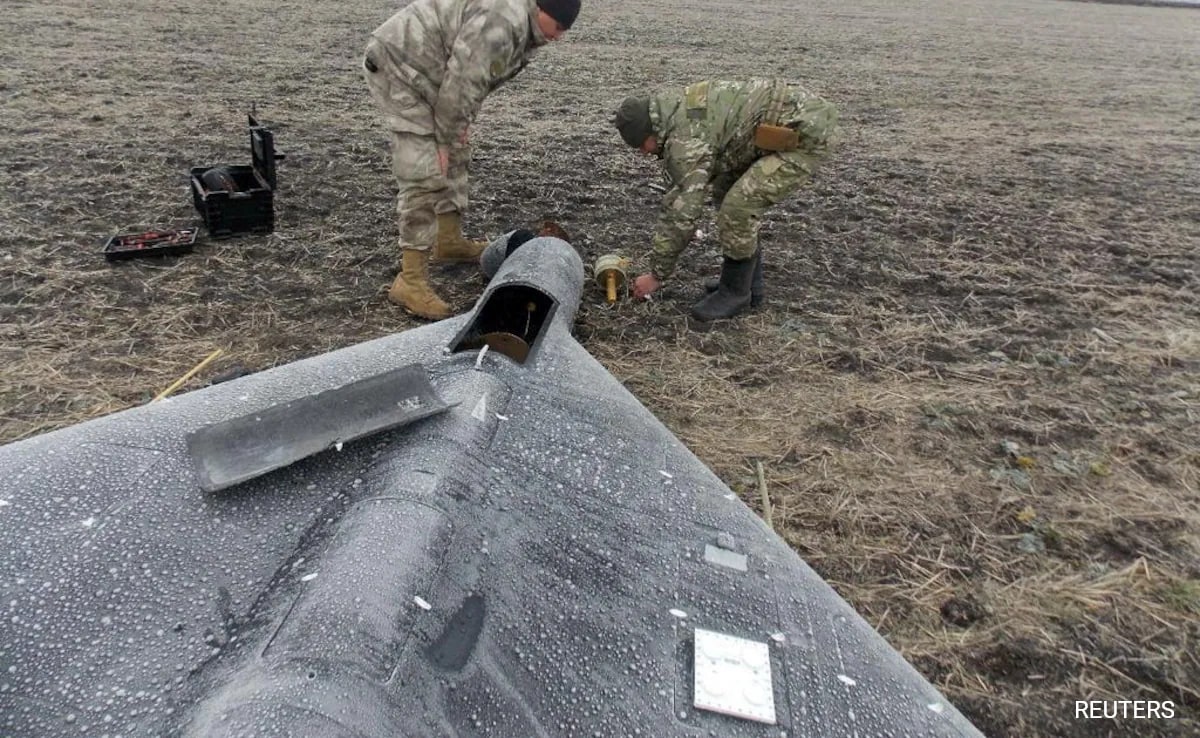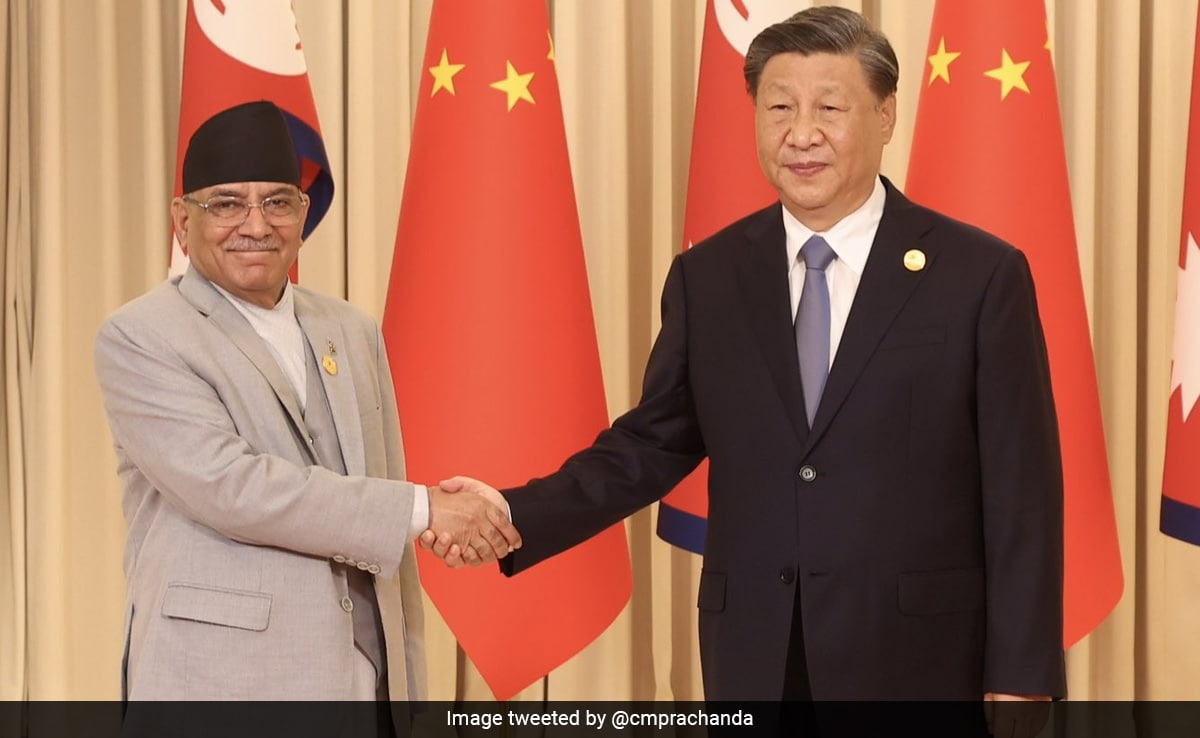Russia is producing a new long-range attack drone called the Garpiya-A1 using Chinese engines.
Kyiv:
Russia started producing a new long-range attack drone called the Garpiya-A1 last year using Chinese engines and parts, which it has deployed in the war in Ukraine, according to two sources from a European intelligence agency and documents seen by Reuters.
The intelligence – which included a production contract for the new drone, company correspondence on the manufacturing process and financial documents – indicated that IEMZ Kupol, a subsidiary of Russian state-owned weapons maker Almaz-Antey, produced more than 2,500 Garpiyas from July 2023 to July 2024.
The existence of the new Russian drone incorporating Chinese technology has not been previously reported. IEMZ Kupol and Almaz-Antey did not respond to requests for comment.
The two intelligence sources said that the Garpiya, which means Harpy in Russian, has been deployed against military and civilian targets in Ukraine, causing damage to critical infrastructure as well as both civilian and military casualties.
They shared with Reuters what they said were images from Ukraine of the wreckage of a Garpiya, without providing further details. Reuters found information that reinforces this conclusion, but was unable to confirm the images independently.
The sources asked that neither they nor their agency be identified due to the sensitivity of the information. They also asked that certain details, such as dates, related to the documents be withheld.
Samuel Bendett, an adjunct senior fellow at the Center for a New American Security, a Washington DC-based think tank, told Reuters that Garpiya, if confirmed, would mark a departure from Russia’s reliance on Iranian designs for long-range drones.
“If this is happening, it could indicate that Russia can now rely more on domestic development as well as, obviously, on China, since both sides in this war depend on many Chinese components for drone production,” he said.
Iran, which didn’t comment for this story, has supplied more than a thousand Shahed “kamikaze” drones to Russia since the start of the invasion in February 2022, Ukrainian President Volodymyr Zelenskiy said in May last year.
They have been used to exhaust Ukrainian air defences and hit infrastructure far from the front lines. Iran has repeatedly denied sending drones to Russia for use in Ukraine.
Russia’s defence ministry did not respond to a request for comment for this story. The Chinese foreign ministry said in a statement to Reuters that Beijing strictly controls the export of items with potential military applications, including drones.
“With regard to the Ukrainian crisis, China has always been committed to promoting peace talks and political settlement,” the statement said. It added that there were no international restrictions on China’s trade with Russia.
NATO APPEAL
NATO Secretary General Jens Stoltenberg last week called on China to stop supporting Russia’s war in Ukraine and said Beijing’s assistance has been a significant factor in the continuation of the conflict.
The Garpiya “closely resembles the Shahed” but it has several distinguishing features, including a unique bolt-on fin and Limbach L-550 E engines, the European agency said in a statement to Reuters. The engine, which was originally designed and manufactured by a German company, is now produced in China by a local firm, Xiamen Limbach. The company did not respond to a request for comment.
Reuters reviewed a contract worth more than 1 billion rubles (10 million euros) signed in the first quarter of 2023 between the Russian defence ministry and Kupol for the development of a factory to produce the drones.
The intelligence sources said a former cement factory situated in Izhevsk, Udmurt Republic, in western Russia – which was purchased by Kupol in 2020 – is being used to produce the drones.
Using a video of a Russian drone production facility posted on the Telegram messaging app, Reuters was able to identify the site as the factory in Izhevsk from the colour and design of the building’s beams and internal architecture which matched file imagery of the site. The location of the file imagery was verifiable from nearby buildings, roads, and trees that matched street views and satellite imagery.
A prototype of the Garpiya was launched in the first half of 2023, company communications showed. Production reached several hundred in the second half of 2023 and more than doubled to around 2,000 in the first half of 2024, the agency said.
Bendett, the defence analyst, said 2,500 drones per year would represent a sizeable chunk of Russia’s output. Ukraine’s top military commander, Oleksandr Syrskyi, said last month that Russia has fired nearly 14,000 strike drones since it invaded in February 2022, including the Iranian Shahed as well as the Russian-made Geran-2 and Lancet drones.
Corporate documents dated from the second quarter of 2023, reviewed by Reuters, showed that supplier TSK Vektor procured parts from Chinese companies for assembly at the Kupol site; 800 Chinese engines were also to be delivered to the new plant where the production line was due to ready by end of the quarter.
TSK Vektor did not respond to request for comment.
The European intelligence service said in the statement it was concerned that Chinese companies were continuing to provide components that enabled Russian production of large kamikaze drones. “The export of the essential components to Russia needs to stop,” it said.
UNITED STATES VOICES CONCERN
Washington has repeatedly warned Beijing over its support for Russia’s defence industry. It has imposed hundreds of sanctions aimed at curbing Moscow’s ability to exploit certain technologies for military purposes. The State Department and the White House did not respond to a request for comment for this story.
In July, China said it would tighten drone export rules starting on Sept. 1. Beijing has said U.S. sanctions on Chinese entities over the Ukraine war are “illegal and unilateral”.
The Garpiya has a take-off weight of less than 300 kilos and a maximum range of 1,500 kilometres, the production contract between Kupol and the Russian defense ministry said – roughly similar to Iran’s Shahed-136 drones that Moscow has used extensively in Ukraine.
The Washington Post reported in August that Russia aimed to increase production of a domestic version of the Shahed-136, known as the Geran-2, at a plant in the Alabuga Special Economic Zone, in Tatarstan. Ukraine said in April it had carried out a drone strike against a drone manufacturing plant at Alabuga.
A third document reviewed by Reuters – a delivery status update between the intermediary TSK Vektor and the manufacturer Kupol, dated in the first quarter of 2024 – detailed an order for 100 axles, carburettors and other Limbach engine parts supplied by two other Chinese companies: Juhang Aviation Technology and Redlepus Vector Industries, both based in Shenzhen.
Juhang, which was placed under British sanctions in February and U.S. sanctions in May for providing Russia with drone equipment, and Redlepus did not respond to requests for comment.
Customs data, obtained from a commercial supplier that records and compiles the information, showed that from April 2022 to December 2023, TSK Vektor imported $36.3 million in goods from Chinese Juhang Aviation Technology, and $6.2 million from Redlepus TSK Vector Industrial Shenzhen Co Ltd.
According to the customs documents, the goods included aircraft engines, transistors, electronic modules, connectors, plugs and sockets, spare parts and components most of them marked as “for general civil purpose”, “for general industrial purpose”, “for general civil use”.
(Except for the headline, this story has not been edited by NDTV staff and is published from a syndicated feed.)
Waiting for response to load…











